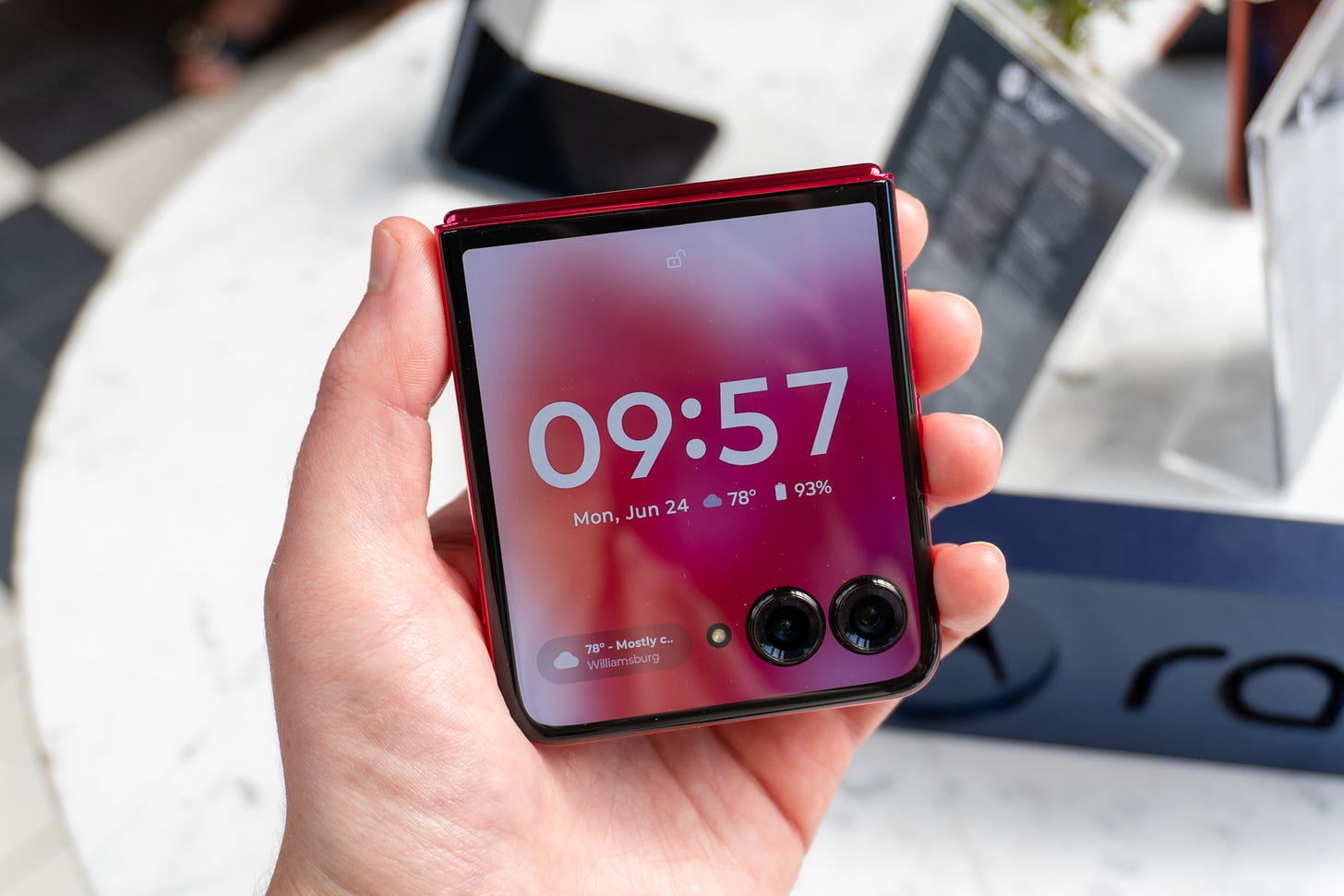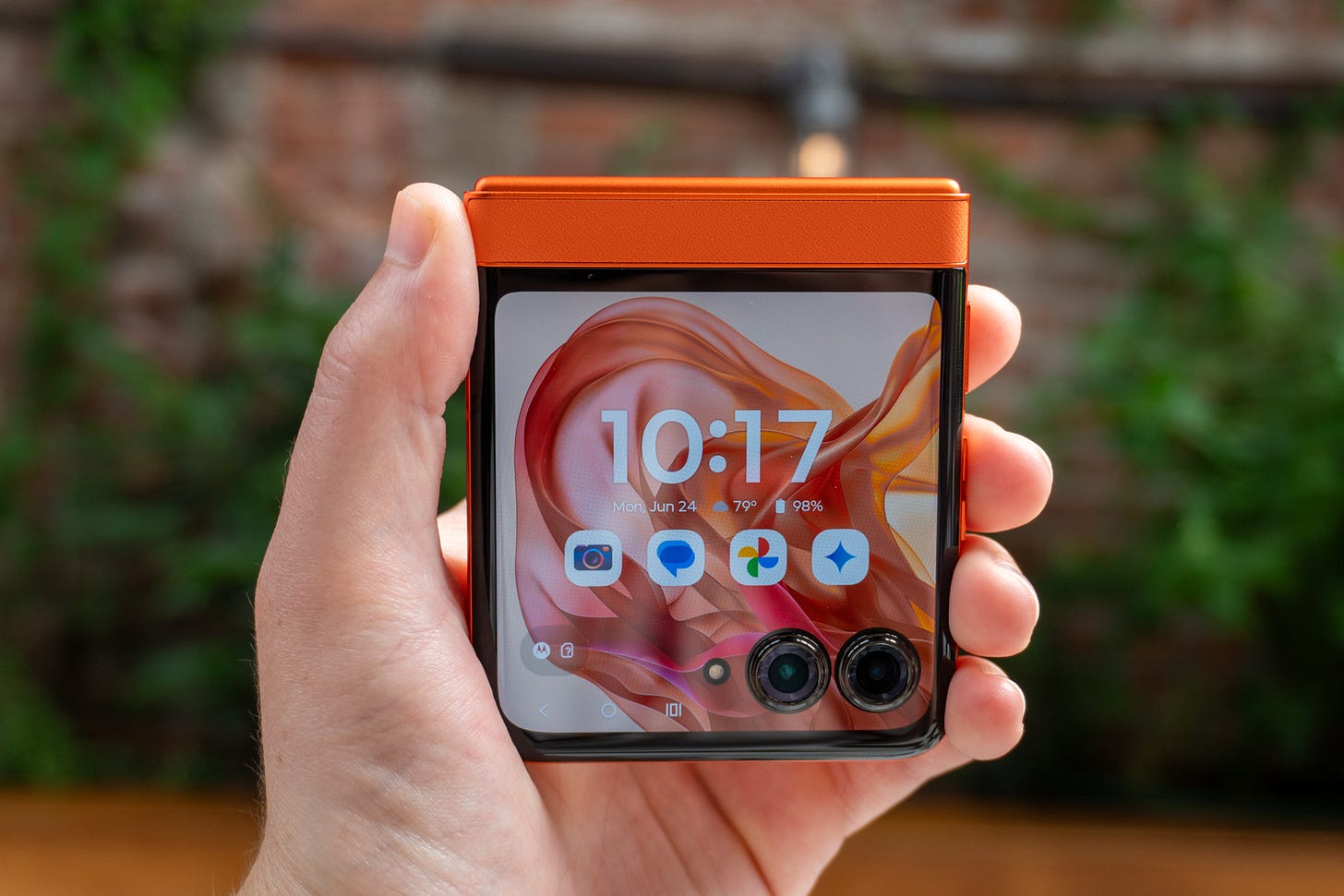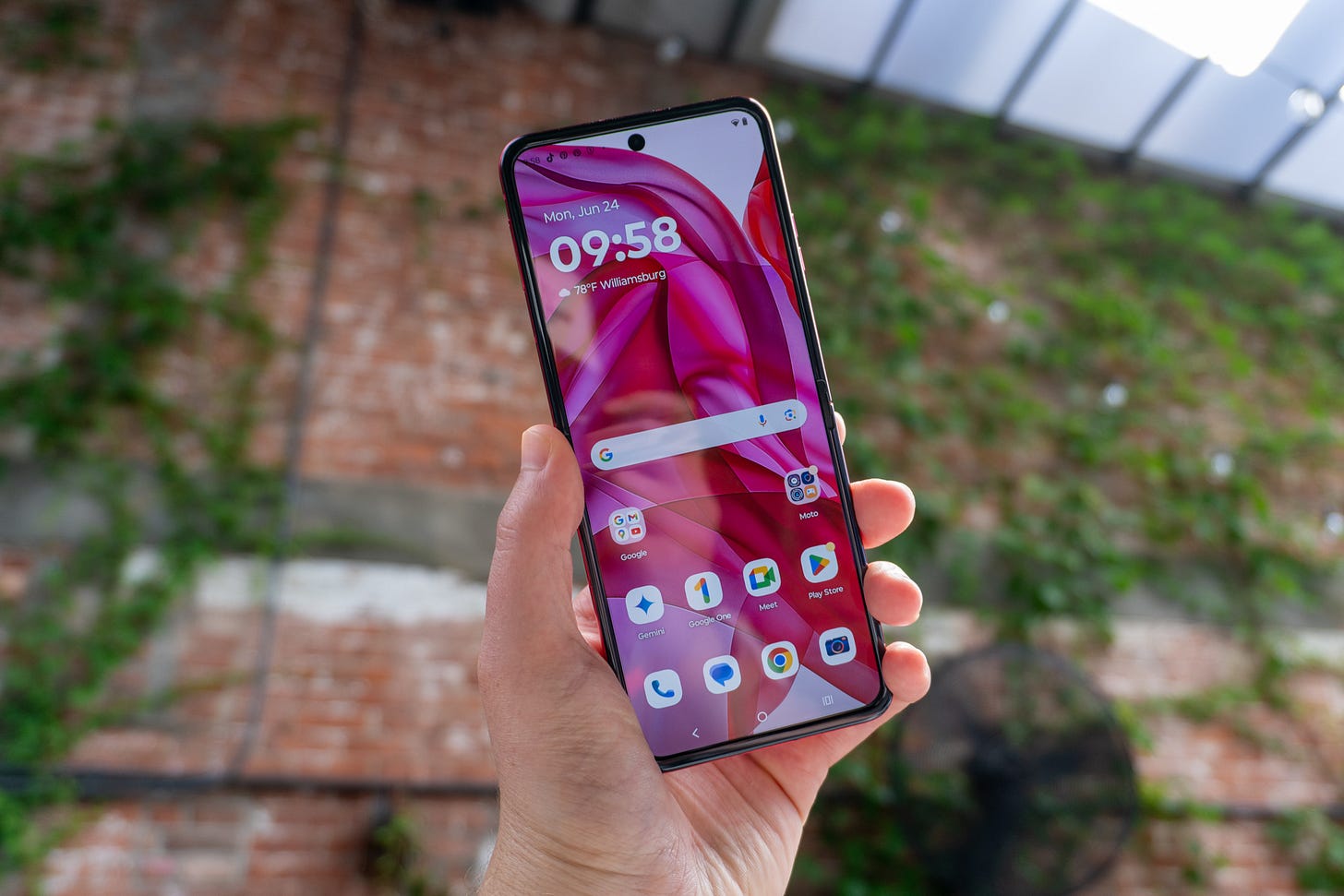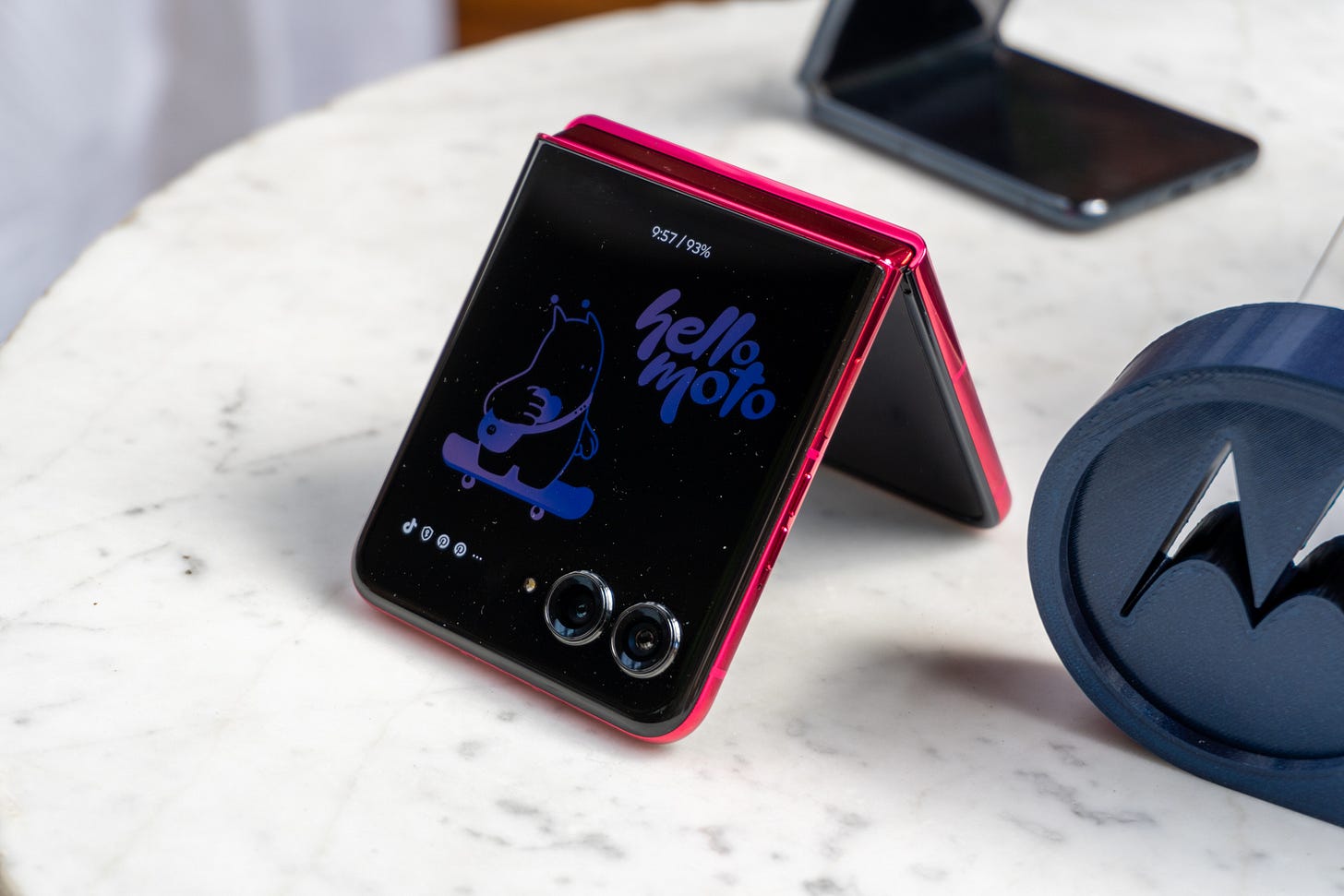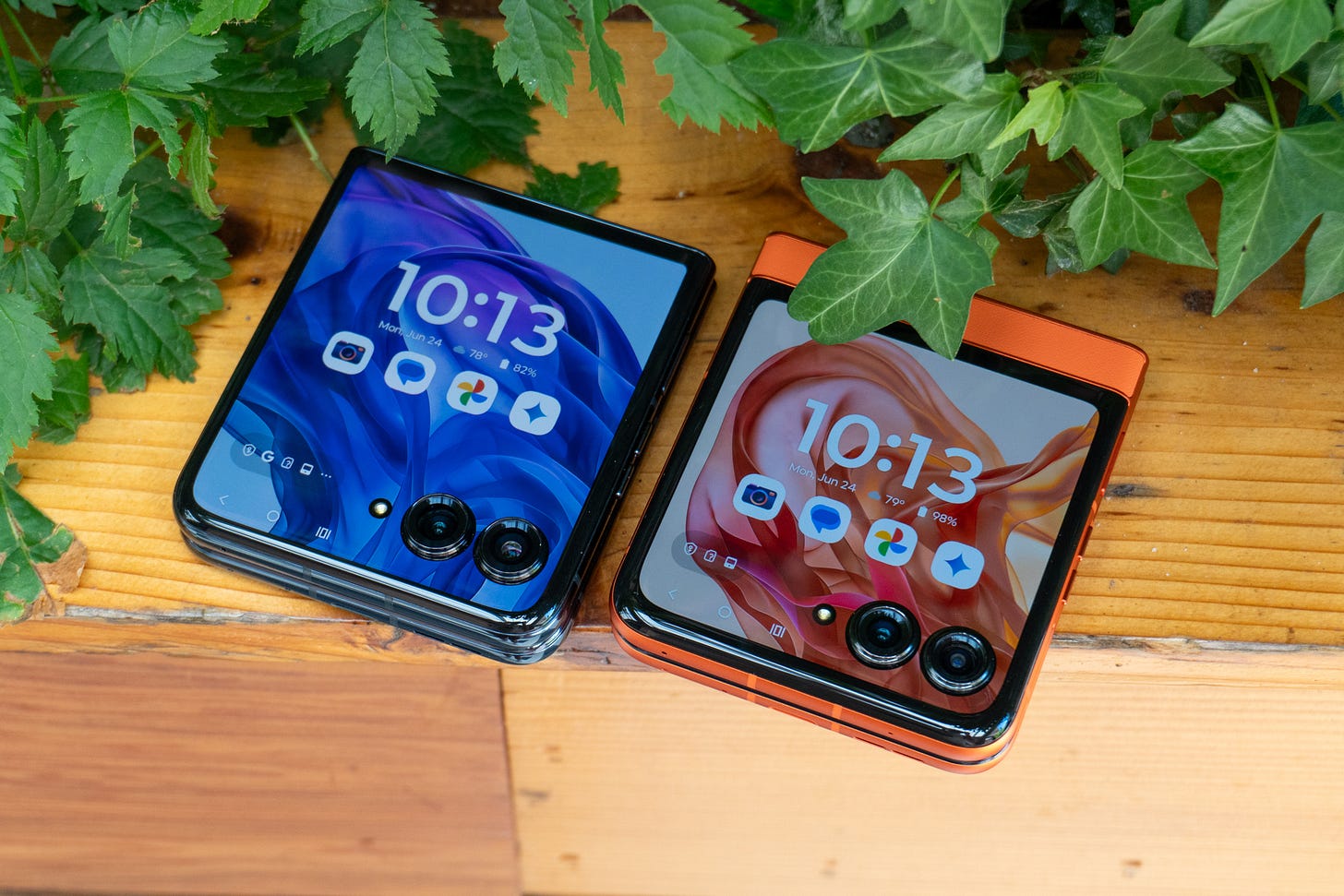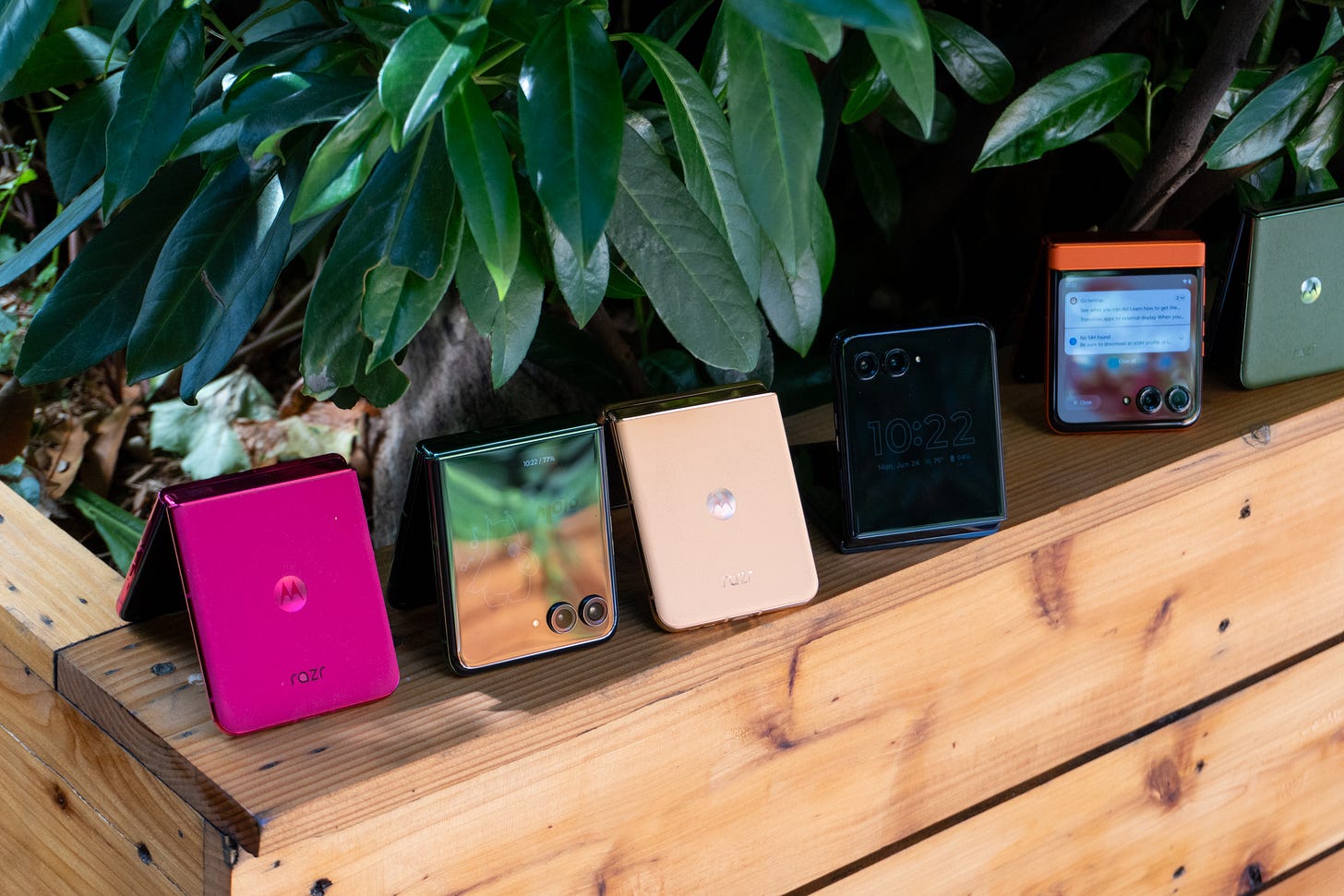The new Motorola Razr+ 2024 has bigger screens, better cameras, and plenty of AI
Motorola has announced a new version of its Razr and Razr+ for 2024, and it's one of the most interesting upgrades so far this year.
It’s a big day for Motorola. The company is announcing the new Razr+ and Razr for 2024, following a similar formula to last year with a flagship model and a slightly less capable (but cheaper) model. And while it doesn’t seem like it at first, these are pretty big upgrades to one of the world's most popular foldable smartphone lines. We went hands-on with both of the new phones at a briefing in Brooklyn, and there’s a lot of neat stuff to talk about.
Moto Razr+ (2024) specs
📆 Release date: July 24, 2024
💰 Price: $999.99
📺 Screen size: 6.9-inch inner / 4-inch outer
🖥️ Resolution: 2640 x 1080 inner / 1272 x 1080 outer
🏃♂️ Refresh rate: Up to 165Hz on both
💡 Brightness: 3,000 inner / 2,400 nits outer
📸 Main camera: 50MP
📸 Telephoto camera: 50MP with 2x optical zoom
🤳 Selfie camera: 32MP
⚙️ Chipset: Snapdragon 8s Gen 3
🐏 RAM: 12GB
🗄️ Storage: 256GB
🔈 Speakers: stereo (and no headphone jack)
🔋 Battery: 4,000 mAh
🔌 Wired Charging: 45W
⚡ Wireless Charging: Yes, 15W and reverse
📶 Connectivity: 5G sub6 and mmWave, WiFi 7
👁️ Biometrics: Side-mounted fingerprint reader
⚖️ Weight: 189 g
🌈 Colors: Midnight Blue, Spring Green, Peach Fuzz, Hot Pink
🤖 OS: Android 14 (three years of upgrades, four years of security patches)
🪨 Durability: Corning Gorilla Glass Victus on outer display
💦 Waterproof: IPX8
Moto Razr (2024) specs
📆 Release date: July 24, 2024
💰 Price: $699.99
📺 Screen size: 6.9-inch inner / 3.6-inch outer
🖥️ Resolution: 2640 x 1080 inner / 1056 x 1066 outer
🏃♂️ Refresh rate: Up to 120Hz inner / Up to 90Hz outer
💡 Brightness: 3,000 inner / 1,700 nits outer
📸 Main camera: 50MP
📸 Ultra-wide camera: 13MP with 120–degree field of view
🤳 Selfie camera: 32MP
⚙️ Chipset: MediaTek Dimensity 7300X
🐏 RAM: 8GB
🗄️ Storage: 256GB
🔈 Speakers: stereo (and no headphone jack)
🔋 Battery: 4,200 mAh
🔌 Wired Charging: 30W
⚡ Wireless Charging: Yes, 15W
📶 Connectivity: 5G sub6 and mmWave, WiFi 6E
👁️ Biometrics: Side-mounted fingerprint reader
⚖️ Weight: 188 g
🌈 Colors: Koala Grey, Beach Sand, Spritz Orange
🤖 OS: Android 14 (three years of upgrades, four years of security patches)
🪨 Durability: Corning Gorilla Glass Victus on outer display
💦 Waterproof: IPX8
Moto Razr+ (2024) hands-on
The most noticeable difference between the new Razr and last year’s is the outer display. On both the Razr and Razr+, Motorola has increased the screen size pretty substantially. There’s now a 4-inch outer screen on the Razr+ as opposed to the 3.6-inch panel from last year, while the regular Razr gets that 3.6-inch panel in place of the 1.9-inch display from the older model. They’re still P-OLED panels and offer sharp resolution, fast refresh rates, and vibrant colors.
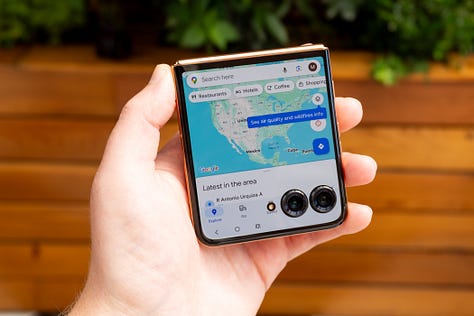
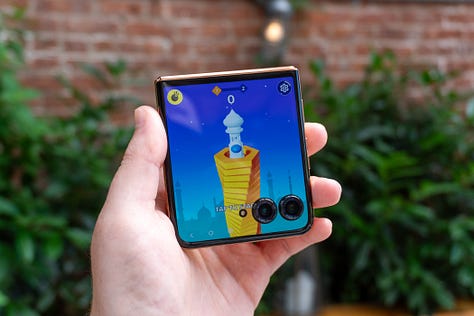
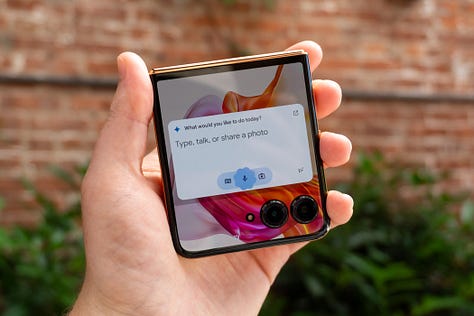
To accommodate the extra room, Motorola is introducing redesigned panels and widgets that offer more information and better looks than before. What’s more, the Spotify panel has been updated with curated playlists for quicker access to your favorite music, and there’s a new Bose panel for adjusting the settings of your Bose headphones on the go.
Of course, you can still play all of your favorite games on the Razr cover screens, and you can use any app you want without having to open the phone itself. When I reviewed the Razr+ last year, I found myself interacting with Gmail and Google Maps a lot on the smaller display, and I anticipate I’ll have a similar experience during my review of the new models.
Open the phones and you’ll be greeted by a 6.9-inch P-OLED display. Yes, that makes both of these phones some of the largest on the market, but they remain somewhat manageable thanks to the slim aspect ratios. I tested both the Razr and Razr+ in direct sunlight and I could easily make out what was on the screens, all thanks to the 3,000 nits of increased brightness. They also seemed plenty sharp and colorful, although I’ll need more time to decide whether they’re as good as other smartphones like the iPhone 15 Pro or Galaxy S24 Ultra.
I also played with the new cameras a bit during my hands-on time. The Razr+ comes with a new 50MP main camera, as well as a 50MP 2x telephoto camera. The latter replaces the ultra-wide camera that was present on last year’s Razr+ phones, which isn’t much of a shame given it was one of the weaker parts of the experience. Meanwhile, the Razr gets the same 50MP main camera and a 13MP ultra-wide.
Motorola is promising higher photo and video quality with these cameras, as well as improved bokeh, stabilization, and focusing thanks to an upgraded processing algorithm and some neat AI background tricks. I only snapped a couple of photos during my time, but they seemed decent at first glance.
Speaking of AI, Motorola made a big deal about the artificial intelligence that comes installed on the new Razrs, and it’s mostly thanks to Google Gemini which is included out of the box. You can trigger the chatbot by saying “Hey Google” or holding down the power button, and it works on both the inside and outside screens. To sweeten the deal, when you buy one of the new Razr phones, Motorola will give you three free months of Gemini Advanced, which delivers faster performance and 2TB of cloud storage so it can provide more contextualized responses to your queries.
There’s also Moto AI, Motorola’s own suite of in-house AI features that aim to help you in your everyday life. It can do things like summarize your notifications after not paying attention to them all day, record a conversation you’re having with someone and automatically transcribe it with speaker labels (which is very reminiscent of Google’s Recorder app on the Pixel), and even analyze your photo gallery so you can search for things like “the chips Matt and I shared last month.” These features weren’t available to test at my demo, but I plan to spend more time with them as they roll out once the Razr and Razr+ ship.
As far as specs go, the Razr+ comes with a Snapdragon 8s Gen 3 processor, while the Razr uses a MediaTek Dimensity 7800X. You get 256GB of storage on each phone, along with 8GB of RAM on the Razr and 12GB on the Razr+.
The phones should last all day on a charge, according to Motorola. The Razr+ comes with a 4,000mAh battery while the Razr gets a larger 4,200mAh cell. The former can recharge at up to 45W over USB-C, as well as at 15W wirelessly. You also get reverse wireless charging. The normal Razr, on the other hand, can only reach 30W when plugged in. It still comes with 15W wireless charging, but no reverse wireless charging.
As a final note, I’d like to point out that I really dig the Razr and Razr+’s designs. While yes, they look basically the same as last year, the materials Motorola is using is a bit different. Across the board, you’ll find a mix of vegan leather and a suede-like material, both of which are soft, durable, and feel incredibly premium. Plus, they come in a variety of colors that are refreshingly unique. The Razr+ comes in Midnight Blue, Spring Green, Peach Fuzz, and a hot Pink that’s the perfect callback to Pink Razrs of the past. Meanwhile, the regular Razr comes in Beach Sand, Koala Gray, and Sprint Orange (a.k.a. the best color out of all of them).
The phones are also IPX8 rated so they can be submerged in water, and Motorola says they come with dust protection, even though the rating doesn’t indicate that. The hinge has also been improved so that it’s 30 percent stronger, while also reducing the crease on the inner display. It’s noticeably less pronounced than before, but it’s unfortunately still prevalent.
Pricing and availability
Motorola will charge $999.99 for the Razr+ and $699.99 for the Razr when they go on sale on July 24. Both phones are up for preorder beginning July 10th at a variety of retailers and carriers. Stay tuned for more coverage on Moto’s latest foldables, and be sure to subscribe in the meantime so you’re the first to know our full thoughts on these flip-tastic new devices.



